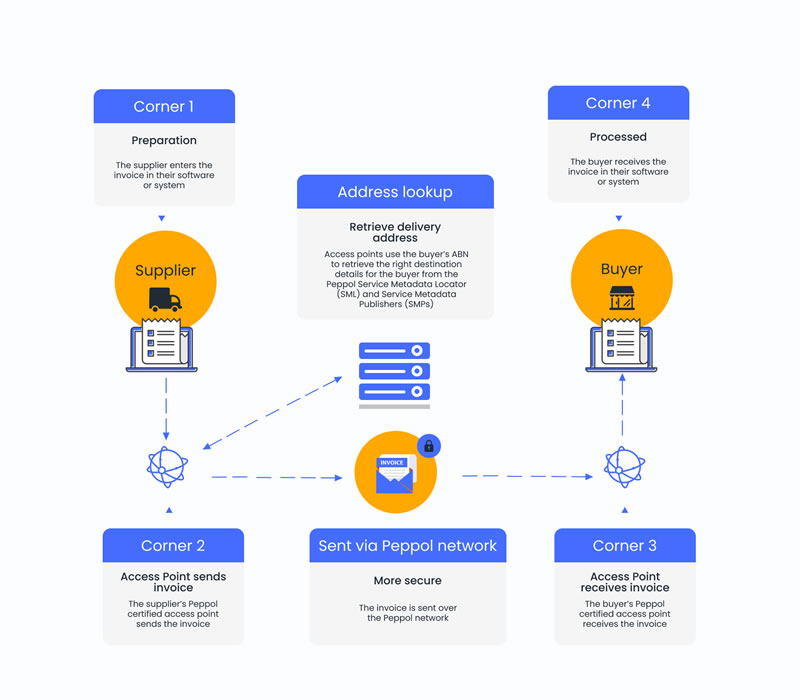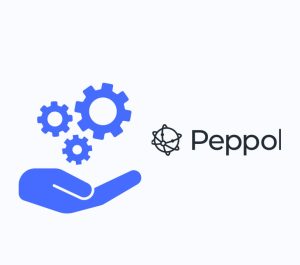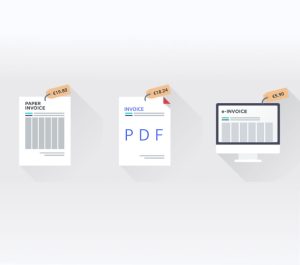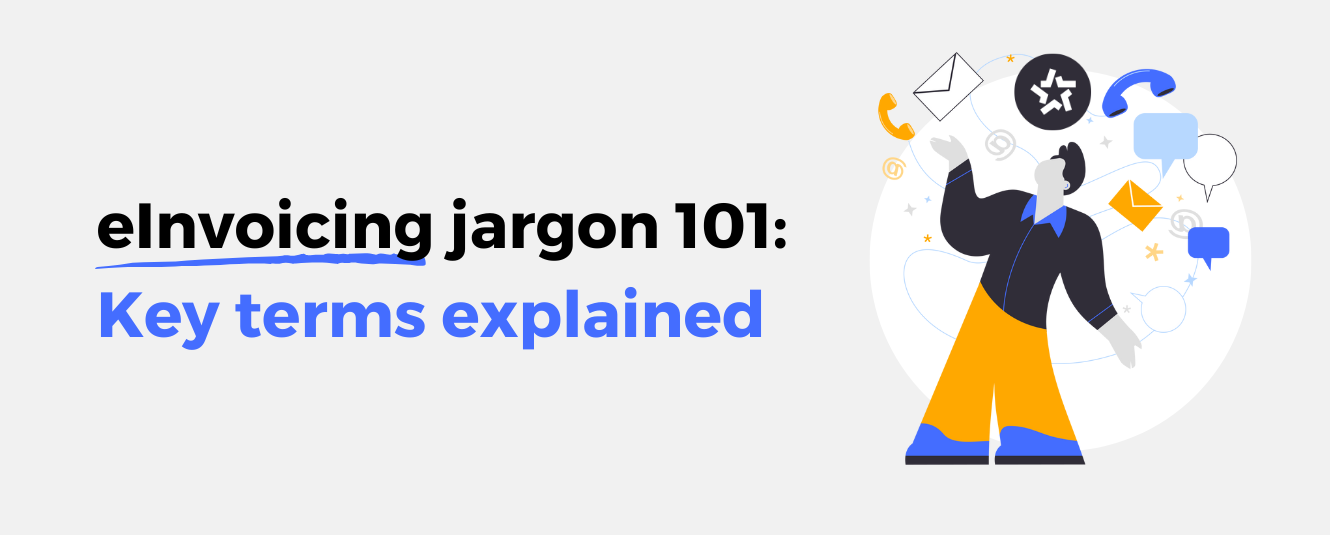Peppol as part of your ERP software

Working in an increasingly global market, the need to efficiently and securely send and receive business documents is higher than ever. What’s more, many countries are promoting public and private partnerships as a way to expand economic growth.
eInvoicing is one area that has until recently been notoriously messy, with countries’ varied systems and legal requirements hindering the efficient exchange of information. Then there are the point-to-point integrations over numerous transport protocols, the different document formats, and substantial efforts needed to develop, maintain, operate, and support those implementations.
This is where the Peppol eDelivery network comes in, introducing a common standard that is guaranteed to be accepted by the receiver, no matter which Peppol jurisdiction they are based in.
Peppol is as easy as sending an email, with easy participant (document receiver) lookup through the Peppol directory, and automation of repetitive processes. What’s more, Peppol removes the need for agreements with different providers and systems, regardless of how many documents you are sending, where you are sending it, and whether the recipient is a public sector organization or private company.
In this article, we are going to examine:
- Document compliance and how it relates to the Peppol network;
- the benefits of Peppol;
- what you need to send and receive e-documents on the Peppol network;
- how to connect your ERP system to the Peppol network;
- what Peppol service providers can do for your business.

Peppol and Document Compliance
To begin with, we should note that Peppol is not an e-procurement platform, but a set of technical specifications that can be implemented within existing ERP and eBusiness exchange services. This makes them interoperable between countries’ disparate systems.
As stated on the OpenPeppol website, the network is based on three pillars, which are:
- The network itself (four-corner model), which provides market enablement for interoperable e-procurement solutions;
- The document specifications (PEPPOL Business Interoperability Specifications ‘BIS’) based on the UBL (Universal Business Language) XML;
- The legal framework that defines the network governance (PEPPOL Transport Infrastructure Agreements, “TIA”).
Although eInvoicing presently accounts for the largest share of transactions on the Peppol network, Peppol can also be used for e-orders, e-advance shipping notes, eCatalogues, Invoice Message Responses, and other business e-documents.
Embedding itself in ERP solutions to assist with interoperability is one of the key features of Peppol. In an ERP system Document Compliance is both used to ensure that documents fulfill the legal and operational requirements of jurisdictions around the world when sending or receiving eInvoices.
ERP solutions are increasingly incorporating Peppol, and they have no option but to manually process eInvoices, which can be much more costly to a business (≈ €19.80 for paper invoice processing, compared to ≈ €5.90 for eInvoices). Where the global eInvoicing market is expected to grow by US $6.93 billion by 2024, the need for efficient eInvoicing is paramount to a business’ competitiveness.
Peppol is expanding beyond Europe
Due to the security and benefits that Peppol provides, it is expanding beyond the European market, with a strong foothold in Singapore, New Zealand, and Australia.
Governments are currently a strong driver in the expansion of Peppol, using regulation and other incentives to increase adoption. Governments are interested in the digitalization of invoices and other procurement process-related messages for various reasons. Some want to strengthen their country’s international competitiveness by implementing more efficient procurement processes, while others want to have better oversight and control of taxation. Then there is cost reduction; according to research studies, in comparison with the manual processing of documents, even conservative estimates put savings at tens of billions per year — in Europe alone.
Any private businesses that want to provide services to these public sector organizations need to adopt Peppol, causing a trickle-down effect that is helping to grow the network. In advanced eInvoicing countries like Norway, it is estimated that 99% of contracting authorities use Peppol.
How to send and receive documents via Peppol
Surprisingly, even in markets that are considered developed i.e. Singapore, Australia, and New Zealand, invoicing is still largely conducted through paper or email-based transactions that involve higher processing costs, longer processing times, and greater instances of human errors.
Peppol is changing this, and with the right support, you can get started quickly.
Learn more about quick Peppol accreditation – Contact us
Your Access Point is your bridge to the entire Peppol network, working as part of the four-corner model that successfully sends eInvoices to other participants via their accounting/ERP systems.
Within this model, senders and recipients can use any ERP software, along with any Access Point, and still successfully transfer documents that conform to their country’s eInvoicing standards.
Bigger businesses sometimes set up their own Access Points, but to do so is quite an extensive process which includes interpreting specifications, developing, testing, operating, maintaining, and ensuring support; and this is simply to get accredited by a Peppol Authority, not to mention providing a scalable user-friendly service that meets the needs of diverse clients. You can read about Peppol Access Point set up in greater detail here.
Most companies go with an established Peppol Access Point provider, as they provide cost-effective services and remove the headaches of managing changing regulations, certifications, and technical/hosting requirements. What’s more, finding an Access Point provider is not limited by geography, giving businesses and public sector organizations more power to choose the company they prefer. You can be in New Zealand, for example, and work successfully with a Peppol provider in Europe.

How to connect an ERP system to Peppol through certified infrastructure providers
As we’ve established, connecting Peppol to your ERP system means you can send and process e-documentation in a more efficient and manageable way. As it stands, many leading ERP providers have not yet introduced interfaces that enable bi-directional invoicing in different formats, necessitating an Access Point add-on. Even if there is ability to create Peppol compliant documents, there are three main issues that drive companies to work with certified Peppol Access Point providers:
1. Unfavorable costs – Not every Access Point offers the same pricing. If you are sending lots of eInvoices on your network, these costs can add up. Then there is the cost of development, maintenance, support, new certifications, and security.
2. Confusing interfaces and processes – Peppol, or even the generation of UBL-based business documents isn’t the core focus of most ERP and invoicing software, and therefore the configuration necessary to generate and exchange e-documents may not be as smooth or functional as those whose core business is the Peppol network. Difficulties are compounded when both the seller and their customer face difficulties.
3. Add-ons – Peppol Access Point providers provide extra tools for things such as validation, participant lookup, encryption at rest, and data retention that make interacting with Peppol even easier.
Connecting with a certified Peppol Infrastructure Access Point provider involves simply signing up. All associated accreditation processes are either removed or expedited, with ongoing hosting and maintenance handled directly by the service provider. It couldn’t be easier.

Using Tickstar as your Peppol Access Point
Tickstar has been providing Peppol access to private and public sector organizations of all sizes since 2012. Trusted by the Singapore and Dutch governments, we work in every Peppol jurisdiction. As a truly international company, we are always up-to-date with the changing regulations of each authority and scale as well as provide customized services to businesses of any size.
- While using Peppol AP or partner AP could be more expensive and technically complicated, we provide extremely competitive pricing and an interface that has been refined through years of providing Peppol services and responding to customer demands.
- We support most document types, but if there is one that we don’t offer, you can talk to us. We’ll be able to incorporate your preferred type if it is Peppol approved.
- If you are providing services to a government organization and need to start using Peppol ASAP, we can set you up in the fastest possible time, no matter the jurisdiction.
- We offer 24/7 customer support with a friendly and knowledgeable team, so you can always be sure of the assistance you need.
Final thoughts
Whether as a legal requirement or as a company initiative to make invoicing more efficient, eInvoicing as an industry is growing rapidly. Document compliance is one way to ensure the interoperability of e-documents, but Peppol is becoming the preferred network through which you can interact with a government agency across the world just as easily as with a domestic company.
Connecting your ERP or invoicing system with Peppol is a way to reduce costs and offer customers more, while using a certified Access Point provider can bring cost savings and a more efficient process for both senders and recipients. Contact Tickstar to find out more about how Peppol can meet your needs today!



